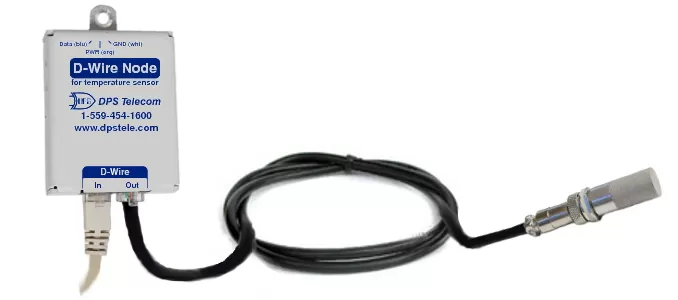Check out our White Paper Series!
A complete library of helpful advice and survival guides for every aspect of system monitoring and control.
1-800-693-0351
Have a specific question? Ask our team of expert engineers and get a specific answer!
Sign up for the next DPS Factory Training!

Whether you're new to our equipment or you've used it for years, DPS factory training is the best way to get more from your monitoring.
Reserve Your Seat Today



Efficiently measure the temperature outside your facility with the External Temperature Probe.
The External Temperature Probe makes it possible to get temperature readings of the area outside your site. The waterproof probe connects to your D-Wire Node via an 8 foot RJ12 cable.
Our D-Wire sensors use simple RJ12 connectors, in and out, which allows you to chain up to 16 sensors to a NetGuardian RTU D-Wire port. This way, you can aggregate a maximum length of 600 feet and run sensors out as far as you need. You can monitor your gear without having to place analog-capable RTUs in multiple places.
Take a look at the D-Wire Node for this temperature sensor.